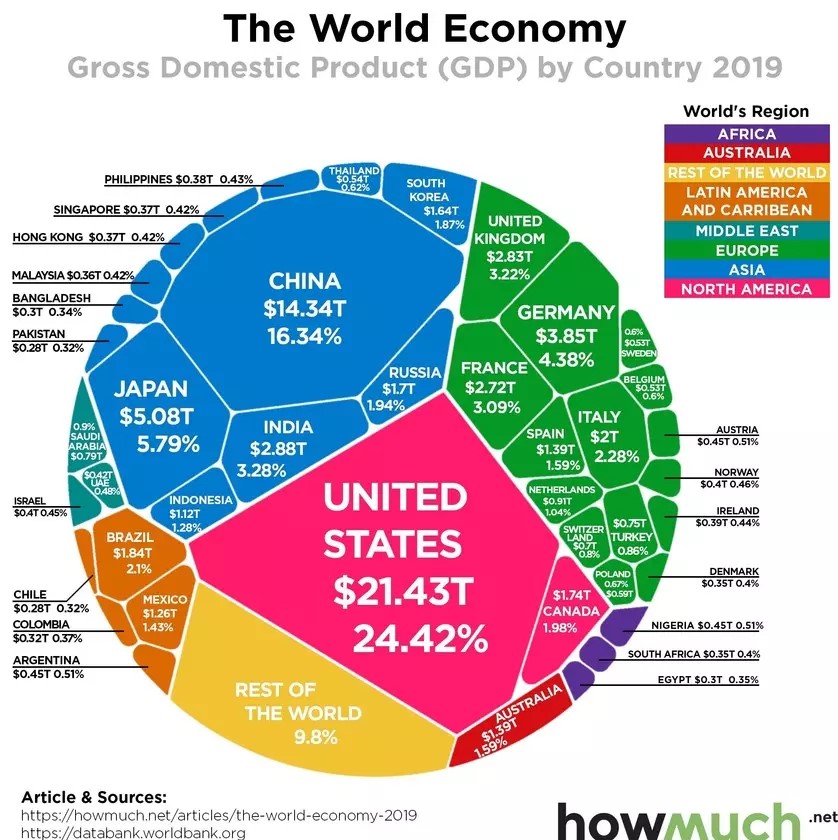KATHMANDU: This year has seen global growth disrupted by the COVID-19 pandemic, with many of the world’s biggest economies in recession.
And the recovery will take longer than economists first thought. In June, the International Monetary Fund’s (IMF) World Economic Outlook projected global growth at -4.9% in 2020, 1.9 percentage points below the April forecast.
Next year, the IMF projects global growth at 5.4% – 6.5 percentage points lower than the pre-COVID-19 projections of January 2020.
The impact would be felt hardest on low-income households, said the IMF, and threatens to undo three decades of progress to reduce extreme poverty.
While the economic impact of COVID-19 varies across the globe – depending on factors from economies’ efforts to contain it, level of development and types of industry, to the stimulus packages available – it’s useful to understand the global economic picture before the pandemic.
Only 16 economies had a GDP higher than $1 trillion, with the US by far the biggest economy at more than $21 trillion – making up just under a quarter of the global total of almost $88 trillion.
China was the second largest at more than $14 trillion and Japan was in third place with just over $5 trillion.
The top 10 economies combined made up two-thirds of GDP, while the 42 represented on the chart made up just over 90% of the world’s GDP, and the rest of the world accounted for the remaining 9.8%.
Africa is the smallest region represented, with three economies – Nigeria, South Africa and Egypt – together making up $1.1 trillion of global GDP.
The chart doesn’t take population size into account and it remains to be seen how the chart will look based on data from 2020. WEF

